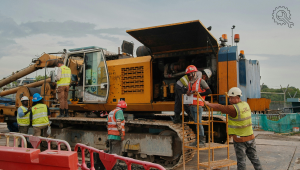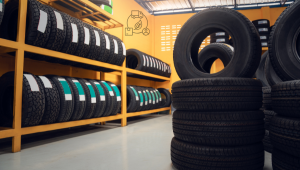Program Overview
This expert-led program focuses on the precision, complexity, and criticality of heat treatment processes in the aerospace sector. Participants will gain a strong foundation in thermal processing techniques—including annealing, hardening, aging, nitriding, and vacuum heat treatment—for both ferrous and non-ferrous alloys. The course also emphasizes compliance with aerospace-specific standards such as AMS 2750, AMS 2759, and NADCAP. Through real-world aerospace case studies (e.g., landing gear, turbine shafts, engine blades), the course enables professionals to diagnose heat treatment failures, prevent distortions, and optimize mechanical performance. Simulations and audit-readiness drills prepare participants to align with global benchmarks in aerospace quality and safety.
Features
- Understand aerospace heat treatment cycles for structural and engine-critical parts
- Apply specialized processes like gas/plasma nitriding, vacuum hardening, and aging
- Align operations with NADCAP and AMS heat treatment standards
- Diagnose and resolve common heat treatment defects in aerospace components
Target audiences
- Aerospace Metallurgists
- QA/QC Specialists
- Heat Treatment Engineers
- Process and Manufacturing Engineers
Curriculum
- 6 Sections
- 32 Lessons
- 2 Days
- Fundamentals of Aerospace Heat Treatment5
- 1.1Microstructure manipulation: hardness, strength, ductility, toughness
- 1.2Heat treatment vs. mechanical property control
- 1.3Criticality of heat treatment in aerospace where performance failure = catastrophe
- 1.4Example: How heat-treated turbine shafts resist fatigue at 35,000 ft
- 1.5Material Property Matching Exercise: Relate phase transformation to real-life properties
- Ferrous Heat Treatment Processes – Annealing, Normalizing, Hardening5
- 2.1Annealing (Coarse pearlite), Normalizing (Fine pearlite), Hardening (Martensite)
- 2.2Critical temperature, furnace vs. air cooling vs. quenching
- 2.3Transformation: Austenite ↔ Ferrite + Cementite → Martensite
- 2.4Use Cases: Annealing for ductility (sheet metal), hardening for gear teeth, normalizing forged links
- 2.5Simulation: Microstructure Transition Pathway: Sequence of heat cycles and phases
- Case Hardening Techniques for Aerospace Components6
- 3.1Carburizing, Nitriding, Cyaniding, Induction Hardening, Laser Hardening
- 3.2Surface modification without compromising core toughness
- 3.3Role of nitrides, carbides of Fe and alloying elements (Cr, Mo, Al)
- 3.4Applications: Gears, cams, valves, crankshafts, wear-resistant high-load parts
- 3.5Insight: Failure prevention through proper nitriding in helicopter transmission gears
- 3.6Activity: Component-Process Mapping: Assign ideal surface hardening to 6 different components
- Heat Treatment of Non-Ferrous Alloys (Al, Ti, Ni, Mg)5
- 4.1Why non-ferrous alloys do not undergo phase transformation like steel
- 4.2Annealing → Recrystallization → Polygonization
- 4.3Techniques: Precipitation strengthening, Solutionizing, Aging
- 4.4Use Cases: Al 7075 T6 (aircraft skin), Ti-6Al-4V (jet engine), Ni-based alloys (turbine blades)
- 4.5Simulation: Age Hardening Cycle Planning: Design a treatment chart for Al alloy extrusion
- Solution Treatment & Age Hardening in Aerospace Alloys5
- 5.1Solid solubility-temperature relationships
- 5.2Coherency of precipitates and impact on strength
- 5.3Case Study: Jet engine blade strengthened via controlled aging to optimize creep resistance
- 5.4T6 temper, over-aging, GP zones, Theta precipitates
- 5.5Activity: Process Flow Buildout: Create an optimized solution + aging cycle for Ti or Al part
- Process Audit, Troubleshooting & Application Mapping6
- 6.1Internal stress, distortion, cracking, soft zones, decarburization
- 6.2Monitoring: Soak time, uniformity, thermocouple positioning
- 6.3Quench crack in hardened shaft → Root cause: uneven temperature gradient
- 6.4Carburized camshaft failure due to undercase depth
- 6.5Simulation: Fault Tree Analysis: Identify errors in failed component (from given micrographs & data)
- 6.6Interactive Simulation: Capstone Problem-Solving Challenge – failed audit due to inconsistent hardness on a flight control rod.







